Combat aircraft. Why didn’t they fight for their homeland?
I will never tire of expressing gratitude to those readers who not only read line by line, but also think about what they read. And complement the written, not expressing His Personal Opinion. And therefore, this reflection is the fruit precisely on the grounds of those who supplemented the article about the IL-10 with their conclusions.
I completely agree with those who (like me, however) believe that the situation with the new aircraft models in the Red Army Air Force was more than ambiguous. Yes, in fact, one completely new aircraft for the entire war (Tu-2) and two aircraft, which were the deepest alteration of the existing ones. La-5 and IL-10.
More than once in my reviews of German aircraft, I expressed quite sound, in my opinion, the idea that if Herr engineers hadn’t sprayed on so many different models, it would probably have made Germany’s sky feel better. But since the idea is “miraculousweapons"Soared constantly, then here is the result. Reactive aviation I didn’t have time to “get on the wing”, and the Germans really lacked engine power for 2500-2800.
But I will not be distracted, but today we’ll talk about this. About attack aircraft. About those planes that could be instead of IL-2.
So much has been written about the IL-2 attack aircraft that there is no point in repeating itself. The aircraft is controversial, not without flaws, but played its role in the war, and played more than.
Today, many authors come up with “revealing” articles on the subject of an aircraft of one design or another, which was “no worse” than the Il-2, but didn’t go into the series, because ... further on, the conspiracy theology in full Ren-TV style .
Naturally, with the mention of all involved persons. Especially often flicker Yakovlev, Shakhurin and, of course, Stalin himself. It was just that the three of us walked and chopped projects with axes.
However, it makes sense to briefly (for a long time definitely fail) to walk through the competitors of the IL-2. Indeed, the aircraft industry of the USSR since 1935 has experienced an unprecedented rise, there were many designers, many have designed and built.
And what was created in our pre-war and initial war periods?
Polikarpov VIT-1
Very interesting plane. The first flight was made under the control of V. Chkalov on 14.10.1937/XNUMX/XNUMX.
VIT-1 showed a high maximum flight speed for its time at an altitude of 3000 m - 494 km / h. The flight range was also very impressive: about 1 km at 000 km / h.
According to P. M. Stefanovsky, a test pilot of the Air Force Research Institute, who also flew a VIT-1 as a test pilot, the aircraft was easy to fly, had good maneuverability and was quite acceptable to fly on a single engine.
The crew of the aircraft consisted of two people - a pilot and a shooter.
Defensive weapons included a turret with a ShKAS machine gun. And the offensive was (I will not sin against the truth) simply unique at that time (1937). Two 37 mm Shpitalnoy OKB-15 cannons installed in the center section of the center wing at the sides of the fuselage, and another 20 mm ShVAK gun in the nose of the aircraft. Add to this up to 600 kg of bombs in the bomb bay or two FAB-500 on external sling.
It could be just a masterpiece plane, if it brought to mind. Factory tests of VIT-1 were not completed, and even today the reason is not entirely clear. There are several versions, of varying degrees of doubtfulness, but in general this project is worth a separate investigation.
Personally, it seems to me that, like all Polikarpov’s projects after the death of Valery Chkalov, VIT-1 suffered just such a fate - to be put aside. But this is indeed a topic for another discussion.
Polikarpov VIT-2
This is not a work on mistakes, as many will think. It was born in the brilliant head of Polikarpov universal attack aircraft, which through small field modifications could be turned into anything.
Polikarpov was exploring the possibility of creating a diving bomber, a multi-seat cannon fighter, a multi-gun attack aircraft and a heavy sea attack aircraft based on VIT-2.
Alas, the General Directorate of the Aviation Industry showed no interest in airplanes. Moreover, there is evidence that Tupolev himself slowed down Polikarpov’s projects. Believe it? So I believe. The patriarch was able to play these games.
May 11, 1938 Chkalov made his first test flight. Further tests were carried out by test pilot of plant No. 84 B.N. Kudrin.
With a flight weight of 6166 kg at an altitude of 4500 m, a maximum flight speed of 498 km / h was obtained, and with a flight weight of 5350 kg, 508 km / h.
By the way, this was the first aircraft with M-105 engines. That is, at Polikarpov Design Bureau, the whole burden of refining raw (and there weren’t others then) Klimov’s engines fell.
In general, the plane, which had simply incomparable performance characteristics, was shown to the head of the Air Force of the Red Army Smushkevich only after the chief engineer of the plant No. 84 Nersisyan personally “tapped” Voroshilov that they really “clamped” Polikarpov’s good car into the SUAI.
It seems that everyone was in favor, and the plane passed the state tests, and took part in the air parade on May 1, and was recommended in the series ... But he did not go.
And the plane was very good. But not without drawbacks, among which the main thing I consider is the complete lack of armor (except for the pilot’s armor plate). A kind of "crystal hammer" turned out.
But at a very impressive speed, the VIT-2 had simply stunning weapons:
- two 20-mm ShVAK-20 guns (in the nose and on the turret);
- two 20-mm ShVAK guns and two 37-mm ShFK-37 guns in the wings;
- two 7,62 mm ShKAS machine guns.
Bomb load up to 1600 kg.
Kocherigin Sh / LBSh
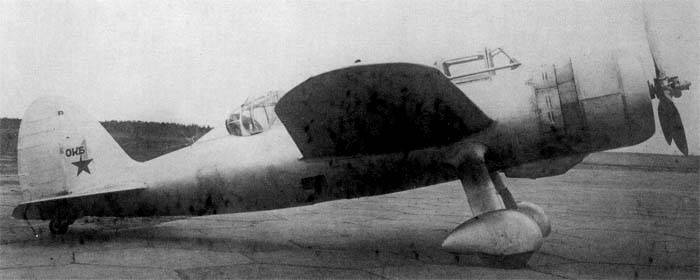
This aircraft, created in 1939, is worth mentioning in connection with the fact that it is generally the first aircraft in the world on which wing cannons were installed. Specifically, in the case of LBSh - ShVAK guns.
It was a monoplane with fixed gear, created on the basis of the scout R-9. Two copies were built, with engines M-88 and M-87A.
The following results were obtained in tests: the maximum speed at the ground - 360 km / h (afterburner - 382 km / h), the maximum speed at an estimated height of 6650 m - 437 km / h, and at an altitude of 7650 m - 426 km / h. Take-off weight - 3500 kg.
As an offensive weapon, the attack aircraft had 2 ShVAK cannons with 150 rounds of ammunition per barrel, 2 ShKAS machine guns with 900 rounds of ammunition and 200 kg of normal bomb load (overload up to 600 kg).
The defensive armament consisted of one ShKAS (b / c 500 rounds) mounted on the MV-3 turrets.
The aircraft was built, tested, recommended for mass production under the name BB-21, but did not go into series. The war began, and the factories that originally planned the release of BB-21 were given over for the production of the Yak-1.
Tomashevich "Pegasus"
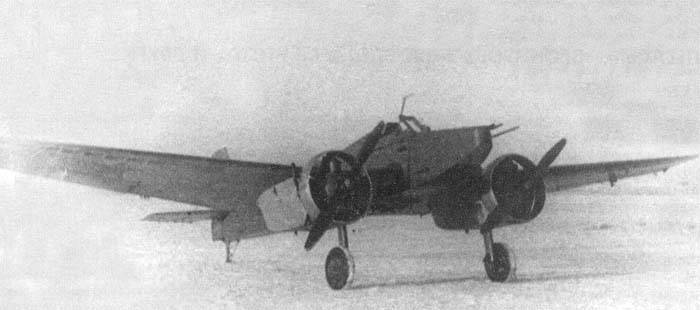
In the summer of 1942, an engineer little known until that moment proposed to fight the German tank formations create an air anti-tank army. In 1938, Tomashevich became the leading designer of the I-180 fighter and at the same time deputy N. N. Polikarpov.
In December 1938, after the death of Chkalov, Tomashevich was arrested and continued his work in the so-called sharashka. And there, Tomashevich proposed in 1941 a draft anti-tank aircraft. And in 1941, Tomashevich really foresaw tank battles of 1943.
On his plane, Tomashevich proposed using ornamental pine, building plywood, S-20 steel, roofing iron and low-grade aluminum alloys in a minimal amount. The designer suggested making wood not only the plane itself, but also, which was quite unusual, the landing gear wheels. As the power plant, M-11 engines were chosen, which easily started in the winter and consumed any kind of gasoline. According to estimates, for the combat departure of five anti-tank aircraft of Tomashevich, the fuel was consumed as much as was required to ensure the combat departure of one Il-2.
In addition to the fact that the aircraft was supposed to be cheap and easy to manufacture, it carried out activities that allowed entrusting it to low-skilled pilots. The chassis was not cleaned, there was no hydraulics and air system, the wiring was the simplest.
The armament of the Pegasus aircraft consisted of one directional 12,7-mm machine gun UB, the rest of the shock weapons were mounted outside under the center section. Several options have been suggested:
- FAB-250 bomb (hereinafter - 2 x FAB-250 or one FAB-500);
- 9 PC-82 or PC-132;
- 37 mm air gun (NS-37);
- two 23-mm air guns (VYA-23);
- 4 bomb cassettes for anti-tank cumulative bombs.
The plane failed, as usual, the engine. M-11 was installed on the U-2, Shche-2 and Yak-6, and there were simply no engines for the thousands of Tomashevich’s planes. The plane did not go into production.
Sukhoi Su-6
The first copy of the Su-6 was built by February 28, 1941 and March 13 V.K. Kokkinaki made his first flight on it. From that moment, factory flight tests began, which took place at the LII of the NKAP and were completed at the end of April 41st.
It was found that in terms of flight speed, climb rate and take-off and landing characteristics, the Su-6 with the M-71 engine was significantly superior to the Il-2 with the AM-38 engine. The maximum speed at the ground was 510 km / h, and at the estimated height - 527 km / h. The ascent time to a height of 3000 m was 7,3 minutes. Flight range - 576 km.
But it was data for a car without weapons. The total weight of the armor was 195 kg, which was not enough to protect the aircraft and crew.
With a normal flight weight of 4 kg (217 kg of bombs and machine gun ammunition), the maximum speed of the ground attack aircraft was 120 km / h, and at an altitude of 474 m - up to 5 km / h. The aircraft gained a height of 700 m in 566 minutes, and a height of 1 m - 000 minutes. The maximum flight range at an altitude of 1,16-5 m at a speed of 000 km / h - 6,25 km.
Despite the excellent flight data of the Su-6 M-71, LII NKAP experts pointed out the weak weapons of the attack aircraft, which completely does not meet modern requirements.
Later, in the process of fine-tuning the aircraft, P.O. Sukhoi Design Bureau still managed to create an outstanding Su-6 attack aircraft with the M-71F engine with excellent flight, aerobatic and combat properties.
Created in 1943-44 The armored attack aircraft Su-6 with M-71F and IL-10 with AM-42 fully embodied the concept of "flying infantry fighting vehicle", which were better than the main attack aircraft of the Il-2 air force.
Shooting and cannon armament consisted of two wing guns VYA-23 and two wing machine guns ShKAS. Ammunition for VYA-23 guns included 230 rounds, for ShKAS machine guns - 3000 rounds.
Bomb weapons allowed suspension:
- inside on the holders of KD-2 four bombs of the type FAB-50 or FAB-100 (to overload);
- outside on two holders of the DZ-40 type, the FAB-50 or FAB-100 bombs.
Jet weapons consisted of 10 RS-132 or RS-82.
With a normal flight weight of 5 kg (250 x RS-10, 132 kg of bombs, two VYA-200 cannons and four ShKAS machine guns with full ammunition), the attack aircraft had a maximum ground speed of 23 km / h, and 445 km at an altitude of 2500 m / h
Su-6 M-71F brilliantly passed state tests. It was a really wonderful car. In terms of maximum speeds, rate of climb, maneuverability, ceiling, range, armament and reservation, the double Sukhoi significantly exceeded the double Il-2 AM-38F standing on the arsenal of the KA Air Force.
In addition, the Su-6 possessed excellent stability and controllability characteristics, was simple and pleasant to fly.
Due to the fact that the entire bomb load was located inside the fuselage, the maximum speed of the attack aircraft remained almost the same.
Alas, with the fine-tuning of the attack aircraft, Sukhoi was clearly delayed, and in May 1944 he successfully completed state tests of the IL-10 attack aircraft with an AM-42 engine, which showed higher flight data.
Comparison of the flight and combat properties of the Sukhov attack aircraft with the IL-10 was not in favor of the first. The Su-6 with the AM-42 was inferior to the Ilyushin car in most respects. As a result, it was concluded that the launch of the Su-6 with AM-42 into serial production was inappropriate.
Sukhoi Su-8
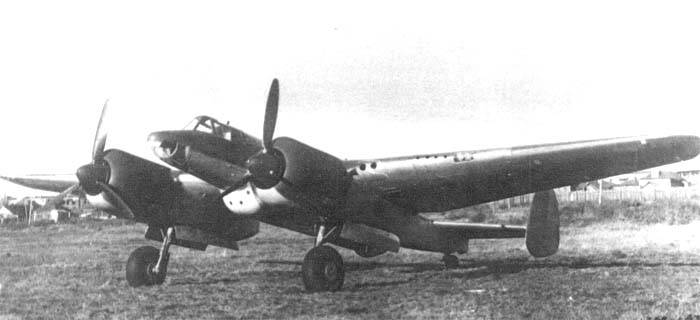
By mid-1941, the Design Bureau of P.O. Sukhoi developed a project for a single-seat armored attack aircraft ODBSh with two promising air-cooled engines M-71. The ODBSh project was officially presented at the SCA Air Force Research Institute on June 30, 1941.
Rifle-cannon armament consisted of two 37mm Shpitalny caliber cannons (100 rounds of ammunition) and two 12,7mm caliber machine guns (400-800 rounds) placed in the lower part of the fuselage on a swing bridge, and 4-8 ShKAS caliber 7,62 machine guns , XNUMX mm. ShKAS fired synchronously with the fuselage bridge.
The normal bomb load of 400 kg (overload of 600 kg) was placed on the internal suspension in the center section of the wing.
In addition, on the external sling it was possible to suspend another 400 kg of bombs. Thus, the maximum bomb load was 1000 kg. Including the possibility was provided for the suspension of one high-explosive 1000-kg bomb type FAB-1000.
Reservation of the attack aircraft included: armor plate in front of the pilot with a thickness of 15 mm, 64-mm front bulletproof glass, armored back of the pilot with a thickness of 15 mm, as well as 10-mm armor plates from below and to the side of the pilot.
Protected gas and oil tanks. In addition, a system for filling gas tanks with neutral gases was provided.
The flight weight of the attack aircraft was 10 258 kg. The maximum speed at ground level was 500 km / h, and at an estimated height of 6000 m - 600 km / h. Climbing time of 5000 m - 7,5 minutes. The flight range was estimated at 1 km, and the maximum - 000 km at a cruising speed of 1 km / h.
By February 1944, the NS-37 guns were replaced by the NS-45 OKB-16 guns of the 45 mm caliber (200 shells). This decision was caused by the fact that the destructive effect of the standard high-explosive fragmentation projectile used in the NS-45 (weight 1065 g) from the 45-mm anti-tank gun was twice as high as that of the projectile for the NS-37 cannon. A 45-mm shell was enough to destroy almost all of the German tanks existing at that time.
Small arms remained the same: eight ShKAS machine guns (four on each wing console) with 4800 rounds of ammunition, two movable defensive machine guns in the cockpit of the radio operator-gunner: UBT (200 rounds) on the UTK-1 turret and a ShKAS machine gun (700 rounds) per lower hatch turret LU-100.
Missile weapons included 6 missiles PC 82 or ROFS-132 (overload 10). The bombs were located in six bomb bay located in the center section. Each compartment contained one bomb weighing 100 kg (a total of 600 kg), or several bombs of smaller caliber from 1 to 25 kg (a total of 900 kg).
Under the fuselage, it was possible to suspend three 100 kg (300 kg) or 250 kg (750 kg) caliber bombs, or two 500 kg caliber bombs, or two VAP-500.
With the reloading flight weight of the aircraft 13 381 kg, the maximum weight of the bomb load was 1400 kg.
With a normal flight weight of 12 kg, the maximum speed near the Su-213 ground with two M-8F engines was 71 km / h (afterburner 485 km / h), at an altitude of 515 m - 4 km / h. Climbing time to a height of 600 m - 550 minutes.
Unfortunately, the passive position of the People’s Commissariat of the aviation industry on the issue of establishing large-scale production of M-71F engines decided the fate of the Sukhoi Design Bureau heavy attack aircraft - just like the Su-6 M-71F, it was not built in the Su-8 series.
In addition, it was 1944, and the leadership of the country, the Air Force and the NKAP had a strong opinion by this time that a war could be won without such an expensive and complicated machine as the Su-8, even if it was much more efficient than cheap single-engine attack aircraft .
There were still mixed and interesting developments. Yakovlev, Mikoyan, Kocherigin, Sukhoi, Polikarpov.
We can say for sure that there were enough designers in the Land of Soviets. Both talented and not so. But in the end, the front line of the enemy’s defense was ironed by IL-2 and subsequently IL-10.
Was it justified?
From my point of view, absolutely. War. And, therefore, the reconfiguration of the factories was fraught with a loss in the pace of aircraft production. And the pace is exactly what we defeated the Germans. While they were rebuilding their plants after a raid by the British and Americans, we calmly released hundreds and thousands of attack aircraft.
Were IL-2 rivals better? Given that the IL-2 was not an ideal attack aircraft? If you familiarize yourself with the description in detail, one thing turns out: IL-2 was better armored than all the proposed aircraft, with the exception of the Su-8. But the Su-8 was the representative of a slightly different line of aircraft, heavier, twin-engine.
And one can argue for a very long time on the issue of how appropriate would be the release of stronger aircraft than the Il-2. Of course, appropriate. Another question is whether such aircraft were actually created. Faster, heavier weapons, better booked?
If you look closely, then no. The release of tens of thousands of IL-2 attack aircraft was fully justified, no matter how shortcomings this aircraft had. Just a year ago, one of the authors on VO told how beautiful the Henschel Ne-129 was, and what would have happened if this plane had been produced with at least 900 copies, and at least comparable to the Il-2.
But the fact is that He-129 was released just as much, 878. And the IL-2 is a little larger. Little bit. 36. And they could launch Sukhoi attack aircraft, which were even better. But really, the best is the enemy of the good. As the results of the war showed.
The fact that the created attack aircraft Yakovlev, Polikarpov, Sukhoi did not fight, but were in the “reserve”, does not detract from their capabilities. The best confirmation is the State Prize of the 1st degree for the creation of the Su-6, which was awarded to P.O. Sukhoi.
Some aircraft were underestimated, like Polikarpov attack aircraft, and Sukhoi, in principle, too. But there were Ilyushin’s planes that coped with the tasks assigned to them. Here lies the answer to the question. “Ilya” did the work that other aircraft could do. But risking during the war was completely not worth it. How do not change the horses at the crossing.
So the leadership of the USSR also did not take risks.
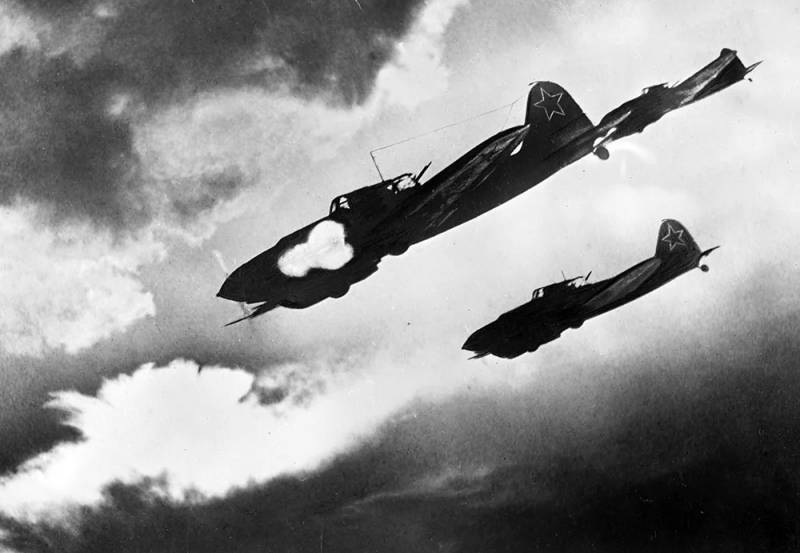
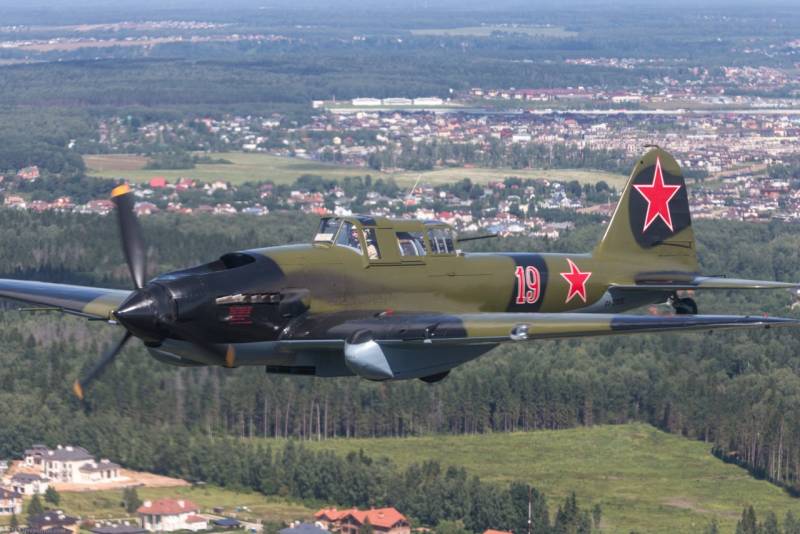
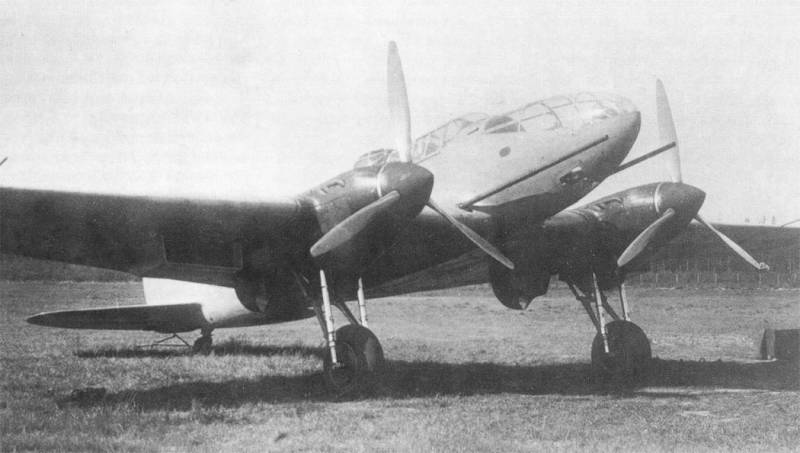
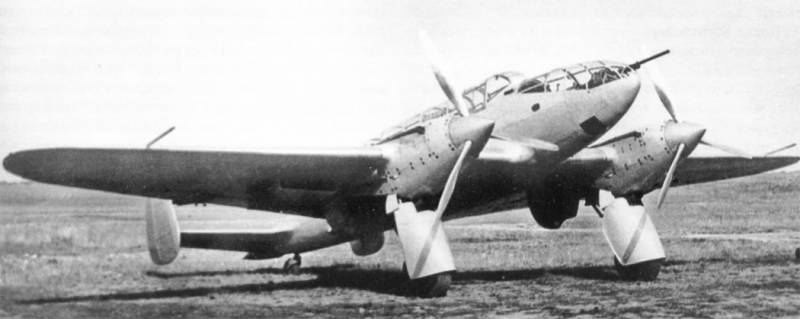
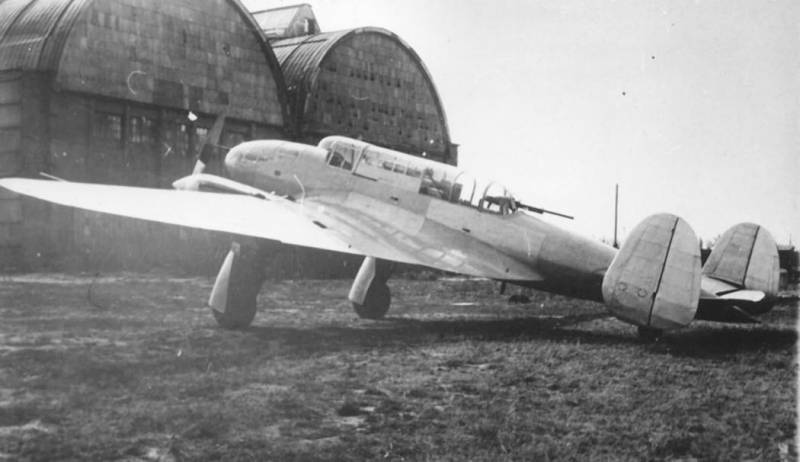
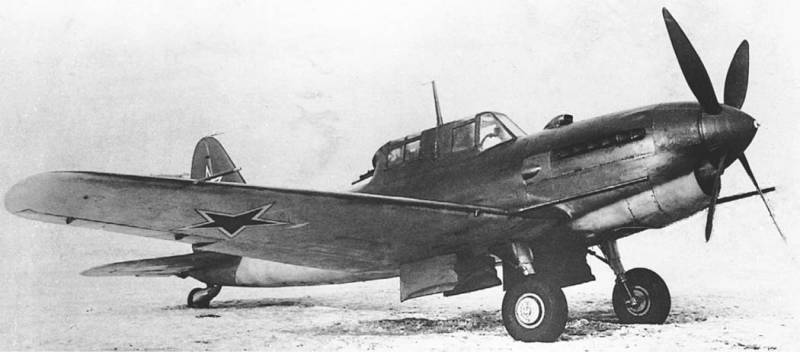
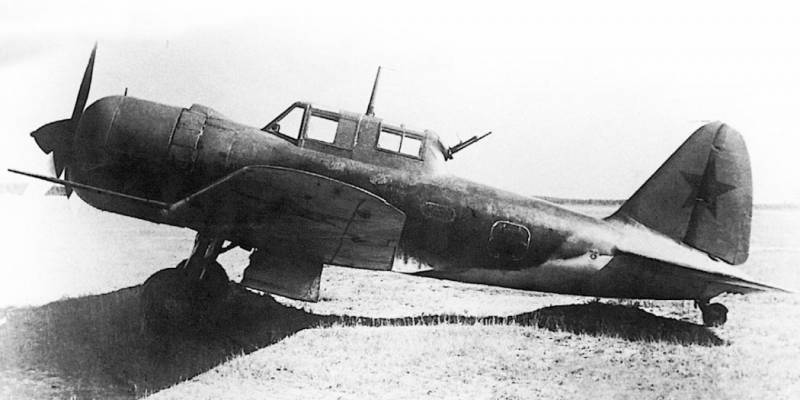
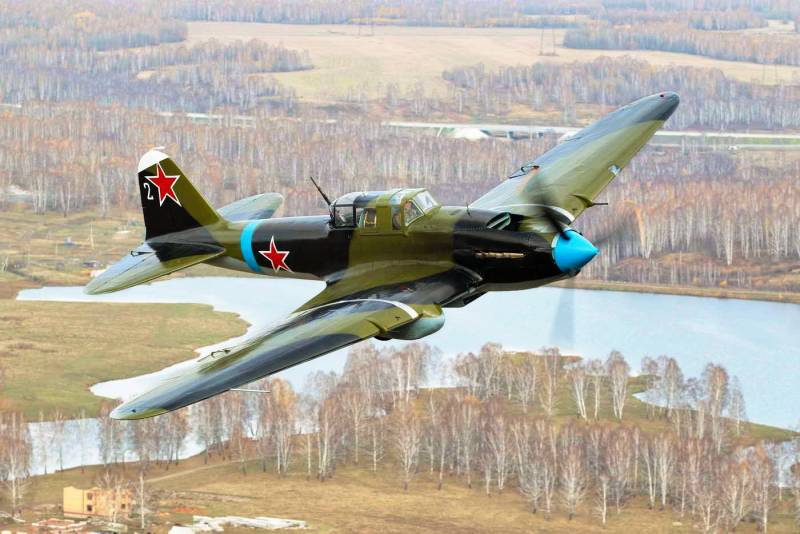
Information